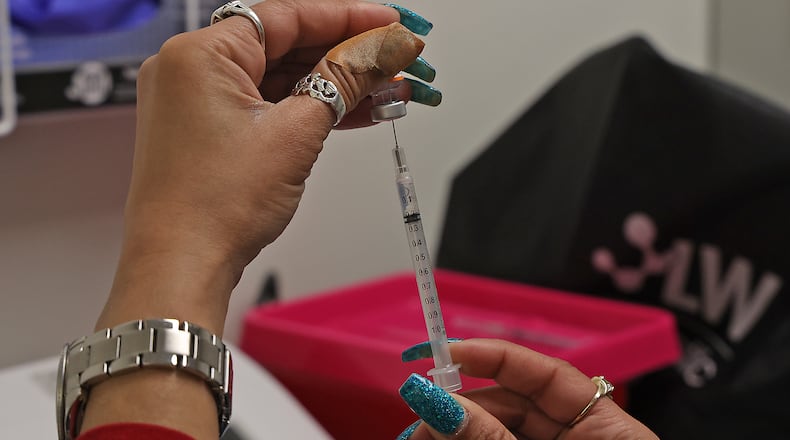“Wastewater sampling is done at certain treatment plant facilities, and based on the results of those samples, we can get a sense of community transmission based on the amount or level of virus people are shedding through their excrement,” said CCCHD Communications Coordinator Nate Smith. “The people who show symptoms and shed the virus do so through going to the bathroom... Wastewater samples are taken, and based off those samples, it gives us an idea of how many people are infected.”
This is the first increase in viral gene copies identified in Springfield wastewater since October, when community transmission was registered at high just two weeks after that wastewater increase was reported.
“When we were notified by ODH, we thought of it as an opportunity to remind people that COVID is still out there, it’s still present in our community. We can test for it and see that this potential is there and remind folks to get vaccinated and take precautions,” he said.
This is also one of the first potential increases in community transmission the health district has seen since the public health emergency was declared over, but they haven’t yet seen an increase in hospitalizations due to COVID.
“We are looking at this as a potential precursor for an increase in cases. It usually takes seven to 10 days, even up to two weeks after being notified of an increase in wastewater sampling. Then we might start to see it in the community, but there is nothing out there currently of community transmission we’re concerned about,” Smith said.
Since the public health emergency has ended, the health district doesn’t have to report cases or actively count cases in a way they did before, Smith said, so it’s unknown how many cases there are, especially since at-home test kits have been the primary way people test for COVID.
Therefore, Smith said this is another reason wastewater sampling is significant and one of the best tools to gauge community transmission.
“The advantage of monitoring wastewater lies in its ability to serve as an early warning system. By detecting an increase in viral gene copies before a surge in reported COVID cases, health authorities can respond proactively,” according to the CCCHD.
Wastewater surveillance includes the collection and analysis of wastewater samples to monitor the presence and concentration of viral genetic material shed by infected individuals, according to the CCCHD.
Studies have shown a strong correlation between the concentration of viral gene copies detected in wastewater samples and the number of COVID cases within a community.
Vaccination numbers locally have been pretty low in recent weeks, with about 20 to 30 a week, Smith said. But there has been significant progress in terms of stopping the spread of viral illnesses, including COVID, because people are staying home when they’re sick now more than before. Smith added to not go out when you’re not feeling well and symptomatic, and that it may be a good idea for those who are immunocompromised to wear a mask when in larger gatherings.
The health district is encouraging anyone eligible to become up to date on their COVID vaccines and be mindful of this information to make informed decisions about their potential risk of a COVID infection.
About the Author

